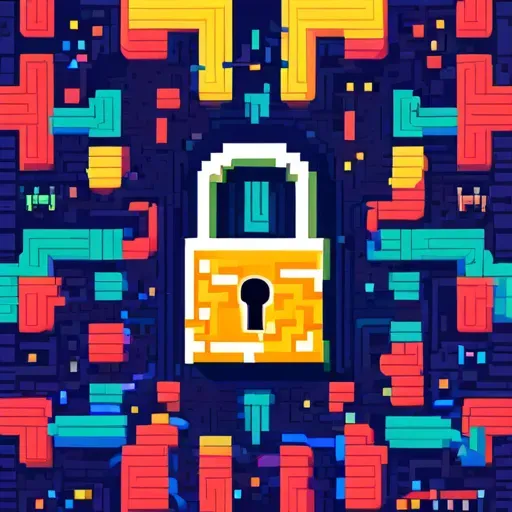
Researchers Introduce Pseudorandom Codes for Enhanced Cybersecurity
/ 4 min read
Quick take - Researchers Christ and Gunn have introduced Pseudorandom Codes (PRCs) in 2024, which enhance the watermarking of outputs from randomized algorithms and provide adaptive robustness against sophisticated cyber attacks, thereby improving secure communication and data integrity in various applications, including generative AI.
Fast Facts
- Researchers Christ and Gunn introduced Pseudorandom Codes (PRCs) in 2024, enhancing watermarking for outputs from randomized algorithms, including generative AI models.
- The newly developed PRCs demonstrate adaptive robustness, addressing previous shortcomings in error-correcting codes that were vulnerable to adaptive attacks.
- PRCs can be transformed into ideal pseudorandom codes with a linear information rate without additional assumptions, improving secure communication across untrusted channels.
- The study introduces CCA-secure pseudorandom codes, which can be derived from adaptively robust public-key PRCs, particularly relevant when the encoding key is public.
- PRCs facilitate watermarking of AI-generated content, embedding undetectable identifiers to protect against unauthorized use and ensuring resilience against adversarial alterations.
Groundbreaking Development in Cryptography
In a groundbreaking development in cryptography and cybersecurity, researchers Christ and Gunn have introduced Pseudorandom Codes (PRCs) in 2024. These codes serve as error-correcting codes that are indistinguishable from uniformly random strings to efficient adversaries. This innovation aims to enhance the watermarking of outputs from randomized algorithms, including generative AI models.
Addressing Previous Shortcomings
Prior constructions of PRCs did not demonstrate robustness against error channels influenced by previously observed codewords. This shortcoming has been addressed in their recent paper, which confirms that the newly developed PRCs possess adaptive robustness. This property was a conjecture previously posited by Cohen, Hoover, and Schoenbach. An ideal pseudorandom code is characterized by its indistinguishability from ideal functionality, encompassing both pseudorandomness and robustness.
The research indicates that any adaptively robust PRC designed for single-bit messages can be transformed into an ideal PRC with a linear information rate, without requiring additional assumptions.
Advancements in Security
The authors introduce the concept of CCA-secure pseudorandom codes, which are analogous to CCA-secure encryption, particularly relevant when the encoding key remains public. They demonstrate that adaptively robust public-key PRCs for single-bit messages can be converted into CCA-secure PRCs, effective within the random oracle model. These findings suggest the potential existence of ideal pseudorandom codes derived from the 2O(n)-hardness of Learning Parity with Noise (LPN), extending to CCA security in the random oracle model.
Such advancements enhance the robustness guarantees for watermarking generative AI outputs, as evident in the works of Gunn, Zhao, and Song in 2024. PRCs offer combined error-correcting and encryption capabilities, significantly improving secure communication across untrusted channels. The adaptive robustness feature of PRCs fortifies resistance against sophisticated cyber attacks, effectively preventing adversaries from discerning patterns from intercepted codewords.
Applications and Future Implications
This technology finds application in watermarking generative AI outputs, facilitating authorship proof and detection of unauthorized use. PRC-based watermarks can embed undetectable identifiers within AI-generated content, ensuring resilience against adversarial alterations. The adaptability of PRCs renders them resistant to advanced persistent threats (APTs) and other high-level cyber intrusions. Moreover, PRCs enable steganography, permitting the concealment of data within other content, which proves beneficial for covert communications in high-risk settings.
This technology is instrumental in watermarking AI-generated data, safeguarding its utility and security from adversarial attacks while preserving data integrity. The unified framework of PRCs simplifies and strengthens the security of various protocols in cybersecurity, supporting error tolerance while maintaining confidentiality. The study addresses crucial questions regarding the robustness of PRCs against adaptive attacks and the unification of robustness and pseudorandomness. The overall security of public-key PRCs is another focus of the study, confirming that PRCs can achieve adaptive robustness, making them suitable for real-world scenarios where attackers may accumulate insights over time.
The authors propose an ideal security framework that integrates both pseudorandomness and robustness into a singular definition, further illustrating the feasibility of Low-Density Parity-Check (LDPC) codes in meeting adaptive robustness standards, particularly relevant within public-key PRC contexts for zero-bit and single-bit messaging applications.
Original Source: Read the Full Article Here


